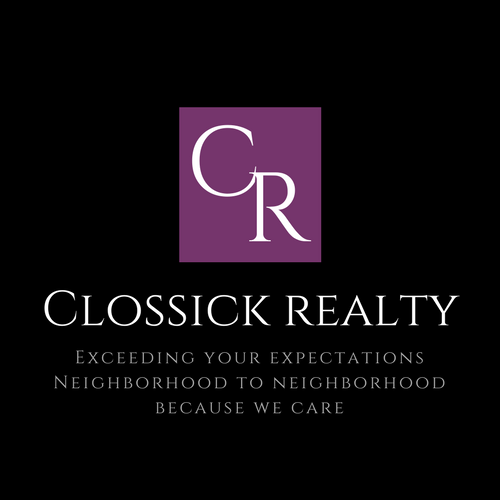 How Mortgages Work
How Mortgages Work
Home ownership is the foundation of the American dream and a top financial goal for many people. But with the median listing price for homes on the market at just over $250,000, according to Zillow, most homebuyers need to finance their purchase with a mortgage instead of paying cash.
Finding the right mortgage loan is arguably just as important as finding the right property. You’ll be paying off your mortgage for years, and the best terms can save you thousands of dollars over time.
This guide explains how mortgages work, the basics of mortgage fees and the mortgage process, and the different types of loans available. You’ll get an overview of the top mortgage lenders in the United States so you can find the best deal for your loan.
When you take out a mortgage, you borrow money from a bank or other lender to buy your home. A mortgage is a secured loan with your home as collateral, so the lender will hold the title to the property until the loan is paid in full. You will make payments on the loan each month, including interest, until it is paid off. After you pay off the mortgage, the lender will give you the title to the property, and you’ll own your home outright.
When you choose a mortgage, you have four major decisions to make: the lender, loan type, loan term and interest rate type.
There are two major types of mortgage loans: government-backed and conventional. Government-backed mortgage programs offer guarantees to lenders that reduce their risk and can make it easier for borrowers to qualify for a mortgage. Conventional loans do not offer the same guarantees but may have lower interest rates.
Government-Backed Mortgages
FHA 203(b) loans. The Federal Housing Administration, part of the U.S. Department of Housing and Urban Development, offers the Basic Home Mortgage Loan 203(b) government-insured mortgage program, which makes it easier for homebuyers to qualify for mortgages. The FHA doesn’t lend money; instead, it insures mortgages and reimburses lenders if borrowers default on the loan.
With government backing, it’s easier to qualify for FHA loans than conventional ones. You could qualify with a lower credit score and a smaller down payment, as little as 3.5 percent. However, you need to pay the FHA an upfront fee of 1.75 percent of the loan amount, plus annual mortgage insurance for at least 11 years. With these fees, FHA loans can be more expensive than conventional ones.
FHA 203(k) loans. If you purchase a fixer-upper, you could get a home renovation loanwith the FHA 203(k) Rehabilitation Mortgage Insurance program. These loans let you finance up to the maximum FHA loan limit (more than $1 million in some locations) into your mortgage to pay for renovations and improvements. The amount is combined with the home purchase under one mortgage. Fannie Mae offers a similar program, the HomeStyle Renovation Mortgage.
Lenders may be more willing to move forward on properties under this program that they wouldn’t accept with a conventional mortgage. Lenders don’t want to get stuck with a run-down property if a borrower defaults on the loan, but they’ll accept these deals because of guarantees from the FHA or Fannie Mae.
Bob Blackhurst, a Realtor with BHHS Fox & Roach Real Estate Agents & Associates in Greenville, Delaware, finds these loans come in handy for many of his clients. “Housing inventory is tight, and it’s not easy to find properties in perfect condition. The FHA 203(k) loan program is a great tool to have at your disposal.”
VA loans. The Veterans Affairs Purchase Loan program helps active-duty members of the military, veterans and their surviving spouses qualify for mortgages. The VA insures the loan so these mortgages are easier to qualify for, and lenders typically charge a lower interest rate than they do on conventional loans. There are zero-down-payment VA loans. However, funding fees are higher the smaller your down payment.
USDA guaranteed home loans. The U.S. Department of Agriculture Single Family Housing Guaranteed Loan Program encourages people to purchase homes in rural areas. Borrowers in these areas can qualify more easily for these loans and at a lower interest rate because the USDA guarantees the loan. However, USDA loans are only available in certain rural areas. They require an upfront fee of up to 3.5 percent of the mortgage amount and an annual fee of up to 0.5 percent of the unpaid balance.
State and local mortgage programs. State and local governments often have their own mortgage programs to help people buy homes. There are programs that help first-time buyers, encourage buyers in underdeveloped areas and support public sector employees such as firefighters and teachers. Check with your state or local housing department to see what programs are available in your area.
Conventional mortgages aren’t part of a government program. They’re a contract between homebuyers and private lenders. These loans can be more difficult to qualify for because they don’t have a guarantee if you default. However, they don’t have any rules limiting who can apply.
Conventional mortgage lenders typically require a down payment from 5 to 20 percent, though some offer loans with a down payment as low as 3 percent, according to the Consumer Financial Protection Bureau. If you have a down payment of less than 20 percent, your lender will likely require you to buy private mortgage insurance, which pays the lender if you default.
Loan term. Loan term is the length of your mortgage, or how long you are scheduled to make payments. Mortgage loan terms typically range from five years up to 50 years and increase by increments of five years. Lenders don’t usually offer every loan term, so your term options will depend on your lender. The most common terms are 15- and 30-year mortgages. A 30-year mortgage is the industry standard.
Your loan term significantly influences how much you pay per month. With a longer mortgage term, your monthly payments are smaller because you have more time to pay the loan back. However, a longer term will cost more in total interest, and long-term mortgage interest rates are usually higher than short-term ones.
For example, compare a $200,000 mortgage with a 15- or 30-year term. Each loan charges a 3.5 percent interest rate. With the 15-year mortgage, the monthly payment is $1,430 with $57,358 in total interest. With the 30-year mortgage, the monthly payment is $898. However, the total interest is $123,312, more than twice as much as the 15-year loan’s interest.
Fixed rate. A fixed-rate mortgage keeps the same interest rate throughout the entire term. Your monthly payment will always stay the same, and it is easy to budget. You will know exactly what your mortgage payments are going to be for the entire term and won’t have to worry about costs going up.
However, your mortgage payment will never go down, even if market interest rates fall. If you want to take advantage of lower interest rates, you’ll need to refinance to a new mortgage, which incurs closing costs.
The monthly payments on a fixed-rate mortgage are typically higher than the initial monthly payments on an adjustable-rate mortgage. Lenders charge higher interest rates on fixed-rate mortgages because they can’t increase your interest rate later. Over time, the payments on an adjustable-rate mortgage could go higher, but they will generally start lower than on a fixed-rate mortgage.
Adjustable rate. The interest rate on an adjustable-rate mortgage can change over time, which means your monthly payments can change depending on market interest rates. Lenders may offer teaser deals with large discounts to attract new borrowers. Adjustable-rate mortgages are based on a benchmark rate, such as the Libor or the weekly constant maturity yield on the one-year Treasury bill. When these rates go up, the interest rate and monthly payment for your mortgage go up. When they do down, so will your interest rate and monthly payment.
Adjustable-rate mortgages have rules for how often the interest rate can change. For example, 5/1 ARMs are the most common. These mortgages keep the same rate for the first five years and adjust only once per year after that. Similarly, 3/1 ARMs keep the same interest rate for the first three years and can adjust once per year after that.
There are caps on how much your interest rate can change. There is an initial cap, which sets a limit on how much the rate can change the first time, such as after the initial five-year period on a 5/1 ARM. There are subsequent adjustment caps, which limit how much the rate can change each year after the initial adjustment. Finally, there is a lifetime cap, which sets a maximum limit on how much your rate can increase overall.
For example, the 5/1 adjustable-rate mortgages at Bank of America currently have an initial cap of 2 percent, a subsequent cap of 2 percent and a lifetime cap of 6 percent. The first increase can be no more than 2 percent. After that, the annual increases can be no more than 2 percent, and the total increases can be no more than 6 percent over the initial rate. If your initial rate is 3 percent, it could never go higher than 9 percent because of the lifetime cap of 6 percent.
Before signing up, calculate how much the payments would be if the ARM hits the maximum rate under the lifetime cap. Consider whether you can still afford the loan payments even in the most expensive scenario.
ARMs are more complicated to understand, and some borrowers don’t realize how much their payments can change. If you sign up for an adjustable-rate mortgage, make sure you understand all the conditions.
Cheryl Clossick | Clossick Realty LLC | Real Estate One | 1365 E. Michigan Ave | Saline, MI 48176
Cheryl@CherylClossick.com | www. CherylClossick.com | (734) 709-1683
 How Mortgages Work
How Mortgages Work

 © 2025 Cheryl Clossick — Real Estate One. All Rights Reserved.
© 2025 Cheryl Clossick — Real Estate One. All Rights Reserved.